MSI launched the Stealth 14 Studio built-in laptop earlier this year to compete with existing laptops. Similar to the ASUS ROG Zephyrus G14, this 14-core power combo is not only responsible for gamers but also a reliable portable modding tool for professionals and developers alike. It has built-in advanced Intel 13th generation processors, a fast, fast QHD display, and Nvidia's current-gen RTX 40-series GPU.
Design and build
MSI is famous for offering beautiful black plastic, but that's not the case with the Stealth 14 Studio. The company has worked hard to update its design language and at first glance this laptop looks good. You might get the name "white white" which is a bit odd considering it's a mix of white and black. There is also a "Star Blue" color with an almost beautiful metallic gray finish.
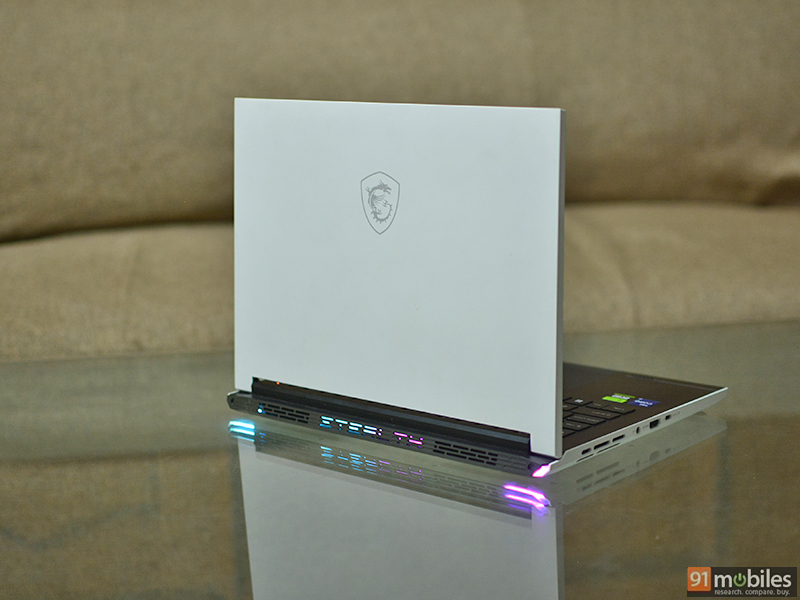

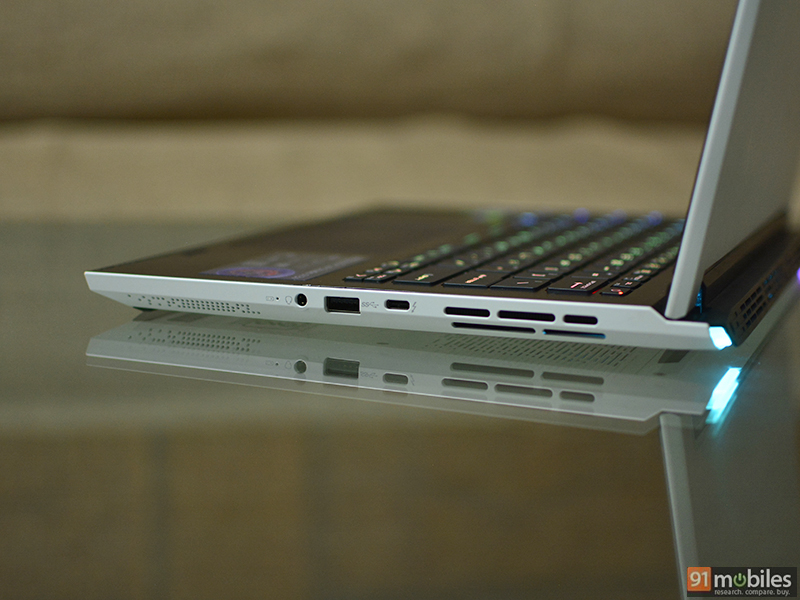
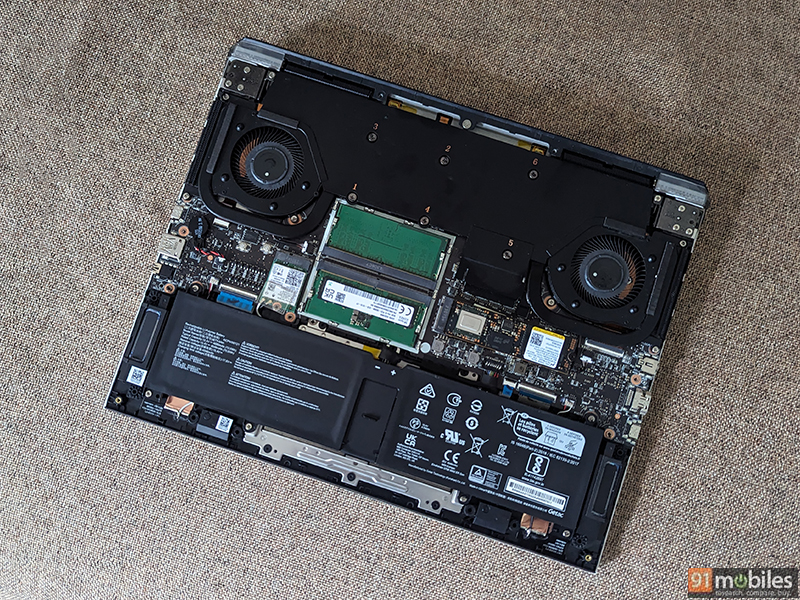
There are some Philips heads that can be easily removed to access the bottom panel. internal structure. In addition to the 72 WHr battery and Wi-Fi card, you can upgrade or replace the dual-channel DDR5 memory and PCIe Gen 4 SSD. Unfortunately there's no second M.2 slot, so you're limited to a single storage space. The CPU and GPU are covered with large cooling fans that apparently provide 50% thermal protection for the PCBA.
Display
MSI Stealth 14 Studio has a good 14 inch display. The IPS LCD has a QHD+ resolution of 2,560 x 1,600 pixels with a fast refresh rate of 240 Hz and an aspect ratio of 16:10. As for color reproduction, MSI says the panel can achieve up to 100% DCI-P3 and 100% sRGB.
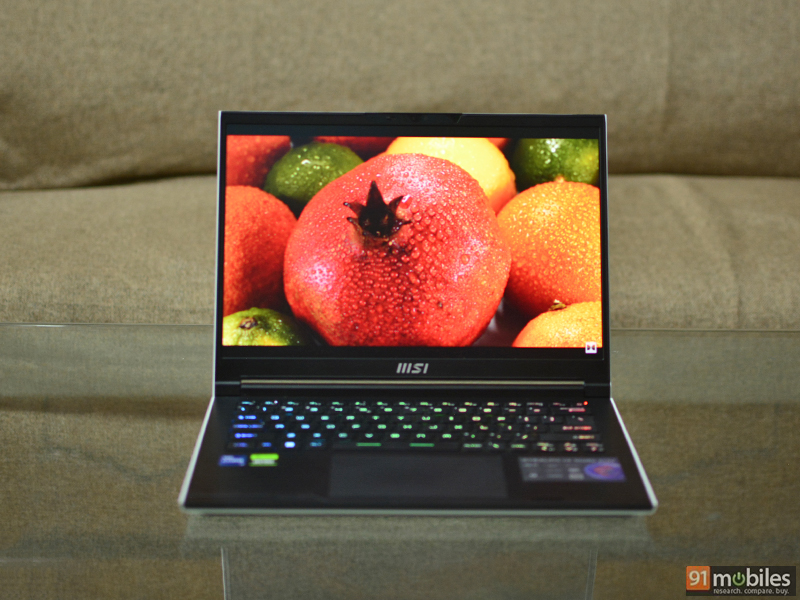

The screen is bright enough and claims up to 450 nits of brightness, but I found it slightly lower. Even the color prints are great. MSI talked about True Color technology, a key feature of the software that allows you to adjust the image to your liking. Besides many presets, you can also adjust the color of your screen by adjusting the settings. Even with the
14" screen, I'm very happy with its performance. All the details look sharp and vibrant with good contrast. The viewing angles aren't the best in class, but given the wide color gamut coverage, the monitor is good for content creation. As for the game, I have no complaints about the screen. Whether it's a high-end AAA game or a fast-paced shooter, the visuals are gorgeous. It's worth noting that the RTX 4060 isn't all that powerful, so unless you're playing low-resource games, you won't be able to take advantage of the panel equivalent to a 240Hz refresh rate.
Keyboard and trackpad
Stealth 14, like the rest of the keyboard deck, has dark chocolate keys and is equipped with RGB backlighting. While the LEDs aren't very bright, a lighting option is available for a switch via SteelSeries software.

My writing is beautiful and would work well for most users, though I wish it had more features to stick around. There's also a slight slip if you like to hit the keys hard, but that didn't bother me much when typing long notes or playing games. The touchpad is large and responsive and supports all standard Windows gestures. Both left and right click provide good click feedback. The texture and finish look slightly less than the glass finish of the Zephyrus G14.
Performance and software
The MSI Stealth 14 Studio is powered by the 13th-gen Intel mobile processors, and is available with up to a Core i7-13700H. It’s a pretty impressive chip, especially for a 14-inch laptop featuring six performance cores, eight efficiency cores and max boost clock speeds of up to 5GHz. The CPU managed to offer consistent performance and I recorded a maximum TDP of 109W while running Cinebench R23 on a 10-minute loop. This is not that far from the rated 115W max-TDP by Intel. Of course, that would not be possible if the GPU was being used at the same time in tasks like gaming. In terms of CPU performance, you can expect it to offer slightly better, than last year’s Core i7-12700H. Here’s a quick look at all the benchmark scores:
The laptop can be configured with Nvidia’s latest RTX-40 series mobile GPUs, ranging from the RTX 4050 to the RTX 4070. The review unit that I got included the RTX 4060 with 8GB VRAM and up to 90W TDP. The notebook also included 16GB of DDR5 memory clocked at 5200 MT/s, and a 1TB PCIe Gen 4 NVMe SSD.
Considering the ‘Studio’ moniker in its name, it seems to be aimed at professionals looking for a machine that can handle workloads that require high graphics performance. The inclusion of an RTX 40-series GPU ensures that the Stealth 14 Studio can be used for creative tasks like photo and video editing as well as 3D rendering, graphics designing, and more.
Of course, the laptop is a perfect candidate for a portable gaming laptop. It managed to deliver excellent performance in first-person shooters like Apex Legends and Valorant, even at its native QHD+ resolution. As for titles like Forza Horizon 5, Rise of the Tomb Raider, and Horizon Zero Dawn, I was able to get up to 100 fps with some fine-tuning of the settings. It is capable of running Cyberpunk 2077 fairly well with ray tracing off, but things seem to topple once you enable it. Of course, there is the option to enable DLSS frame generation, which brings a notable jump in frame rates in supported games.
| Games at QHD+ (1600p) | Medium | High | Ultra/Very high |
| Horizon Zero Dawn | 95fps | 80fps | 77fps |
| Rise of the Tomb Raider | 121fps | 111fps | 91fps |
| Cyberpunk 2077 | 85fps | 67fps | 51fps |
| Cyberpunk 2077 (RT) | 39fps | 37fps | 19fps |
| Metro Exodus Enhanced Edition | 54fps | 43fps | 27fps |
| Forza Horizon 5 | 124fps | 86fps | 75fps |
Using the MSI Center app you can switch between Silent, Balanced and Extreme Performance modes. The last one gives you additional settings to overclock the GPU as well as controls for the cooling fans under Auto, Cooler Boost (full fan speed) and Advanced options. Thermal performance is quite respectable and I didn’t notice throttling during my stress tests. At idle the CPU remained under 50°C with the GPU just slightly above that. MSI claims that it is using special thermal pads instead of traditional paste over the CPU and GPU. It does get hot after a long gaming session, but that’s the tradeoff for having a small compact chassis. The maximum temperature I recorded on the CPU was 98°C, and 82°C on the GPU.
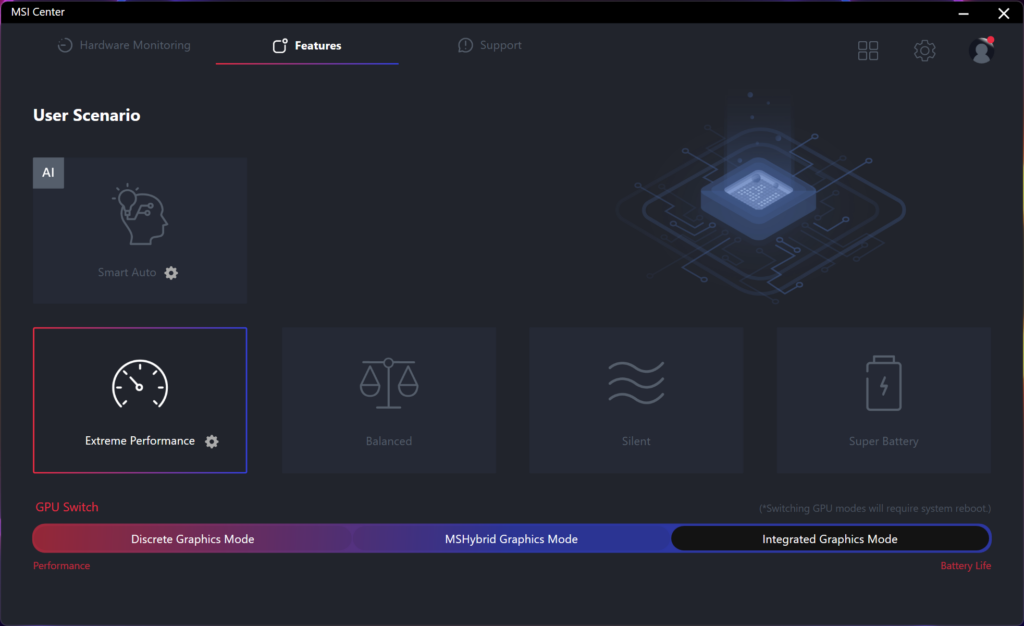
Battery life
The notebook is not that impressive when it comes to battery life, which is common among gaming notebooks. Featuring a 72WHr battery unit, the laptop would last me anywhere from 3 to 4 hours. You can squeeze out a bit more depending on the usage and the settings, but I doubt you can get more than 5 hours.
In my experience, the best way to get the most battery life out of the Stealth 14 Studio was to turn down the brightness to 50-60 percent, switch advanced optimus graphics to integrated only, and switch the power profile to Super Battery on the MSI Center app. Of course, that means a big drop in performance.
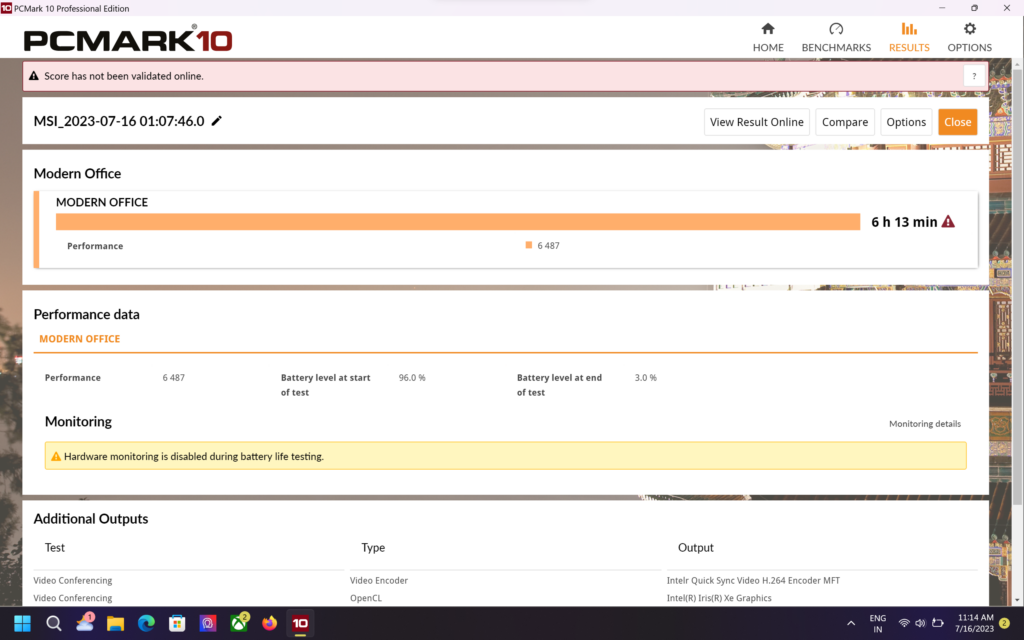
In the PCMark 10 Modern Office benchmark, however, I got slightly better results with a total of 6 hours and 13 minutes of runtime. As for the charging brick, it has a rating of 240W, which makes it large and chunky and adds on to the weight of the laptop especially while you are travelling.
Verdict
The MSI Stealth 14 Studio isn’t the best of the lot and has some room for improvement, and I am confident the company will look into the feedback. Those looking for a compact 14-inch gaming notebook should also consider options like the ASUS ROG Zephyrus G14, or the upcoming Lenovo Legion Slim 5. That said, the Stealth 14 Studio comes across as a good refresh in terms of design when compared to older MSI notebooks, even though the overall finish and quality could’ve been better. The display looks excellent and performs well for all kinds of applications. Even the performance is quite adequate considering it is a small 14-inch notebook. Overall, MSI has made an honest attempt at making a portable yet powerful notebook for a wide range of audiences, and for that, the Stealth 14 Studio deserves consideration.
Editor’s rating: 7 / 10
Pros:
- Excellent display
- Terrific performance
- Suitable for content creation
- Compact design
Cons:
- Average build quality
- Poor battery life
- 720p webcam
0 Comments